ZOOM Fabergé Eggs - Lilies of the Valley Egg
1898 Easter gift to Alexandra, workmaster Michael Perchin
Lilies of the Valley Egg (1898)
Materials: Gold, green-gold, translucent rose pink, and green enamel, diamonds, rubies, pearls, rock crystal, watercolor on ivory
Dimensions: Height of egg (closed): 151 mm. (5 15/16 in.)
Height of egg (opened): 199 mm. (7 7/8 in.)
Owner: The Link of Times Foundation Collection, Russia
This gold, art-nouveau style egg is enameled translucent rose on a guilloche field and supported on four dull green-gold cabriolet legs, composed of overlapping leaves veined in rose-cut diamonds. The egg is surmounted by a rose-cut diamond and cabochon ruby Imperial crown set, with two bows and quartered by four lines of rose-cut diamonds and decorated with lilies of the valley in pearls and rose-cut diamonds. The stalks are lightly engraved green gold, and the leaves are enameled translucent green on gold.
The surprise consists of three oval miniatures of Nicholas II in military uniform and the Grand Duchesses Olga and Tatiana, his first two children. It rises from the top of the egg by means of a geared mechanism and spreads into a fan when a gold-mounted pearl button at the side is turned. A turn in the opposite direction automatically folds and returns the miniatures back to the interior of the egg. The Julian date, April 5, 1898, is engraved on the reverse of the miniatures. Johannes Zehngraf painted the miniatures on ivory; the egg retains its original fitted velvet case.
A lover of flowers, Alexandra Fedorovna regularly had trainloads of blooms brought to St. Petersburg from the Crimea to adorn the Alexander Palace. Lilies of the valley were among the tsarina’s favorite flowers, as were pearls her favorite jewels. A similar design used in the Lilies of the Valley basket is in the Matilda Geddings Gray Foundation Collection. Early in 2007 the Gray Collection will be shown for five years at the Cheekwood Botanical Garden and Museum of Art, Nashville, Tennessee.
This egg was the companion piece to the Coronation Egg in the 1979 sale by Wartski of London for $2,160,000 to Forbes Magazine Collection, New York. In 2004 both eggs sold privately for an undisclosed sum to Viktor Vekselberg, Moscow, and have returned to their country of origin.
Materials: Gold, green-gold, translucent rose pink, and green enamel, diamonds, rubies, pearls, rock crystal, watercolor on ivory
Dimensions: Height of egg (closed): 151 mm. (5 15/16 in.)
Height of egg (opened): 199 mm. (7 7/8 in.)
Owner: The Link of Times Foundation Collection, Russia
This gold, art-nouveau style egg is enameled translucent rose on a guilloche field and supported on four dull green-gold cabriolet legs, composed of overlapping leaves veined in rose-cut diamonds. The egg is surmounted by a rose-cut diamond and cabochon ruby Imperial crown set, with two bows and quartered by four lines of rose-cut diamonds and decorated with lilies of the valley in pearls and rose-cut diamonds. The stalks are lightly engraved green gold, and the leaves are enameled translucent green on gold.
The surprise consists of three oval miniatures of Nicholas II in military uniform and the Grand Duchesses Olga and Tatiana, his first two children. It rises from the top of the egg by means of a geared mechanism and spreads into a fan when a gold-mounted pearl button at the side is turned. A turn in the opposite direction automatically folds and returns the miniatures back to the interior of the egg. The Julian date, April 5, 1898, is engraved on the reverse of the miniatures. Johannes Zehngraf painted the miniatures on ivory; the egg retains its original fitted velvet case.
A lover of flowers, Alexandra Fedorovna regularly had trainloads of blooms brought to St. Petersburg from the Crimea to adorn the Alexander Palace. Lilies of the valley were among the tsarina’s favorite flowers, as were pearls her favorite jewels. A similar design used in the Lilies of the Valley basket is in the Matilda Geddings Gray Foundation Collection. Early in 2007 the Gray Collection will be shown for five years at the Cheekwood Botanical Garden and Museum of Art, Nashville, Tennessee.
This egg was the companion piece to the Coronation Egg in the 1979 sale by Wartski of London for $2,160,000 to Forbes Magazine Collection, New York. In 2004 both eggs sold privately for an undisclosed sum to Viktor Vekselberg, Moscow, and have returned to their country of origin.
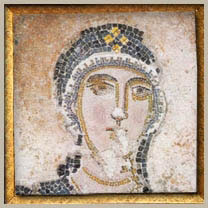




 Imperial Bedroom
Imperial Bedroom Portrait Hall
Portrait Hall Mauve Room
Mauve Room Maple Room
Maple Room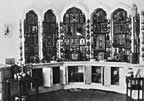 Aleksey's Bedroom
Aleksey's Bedroom Nicholas's Study
Nicholas's Study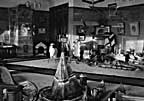 Aleksey's Playroom
Aleksey's Playroom Formal Reception
Formal Reception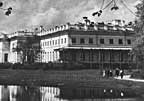 Balcony View
Balcony View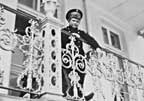 Aleksey- Balcony
Aleksey- Balcony Children-Mauve
Children-Mauve Nicholas's Bathroom
Nicholas's Bathroom Alexandra- Mauve
Alexandra- Mauve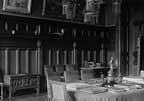 Nicholas's Reception
Nicholas's Reception Tsarskoe Selo Map
Tsarskoe Selo Map